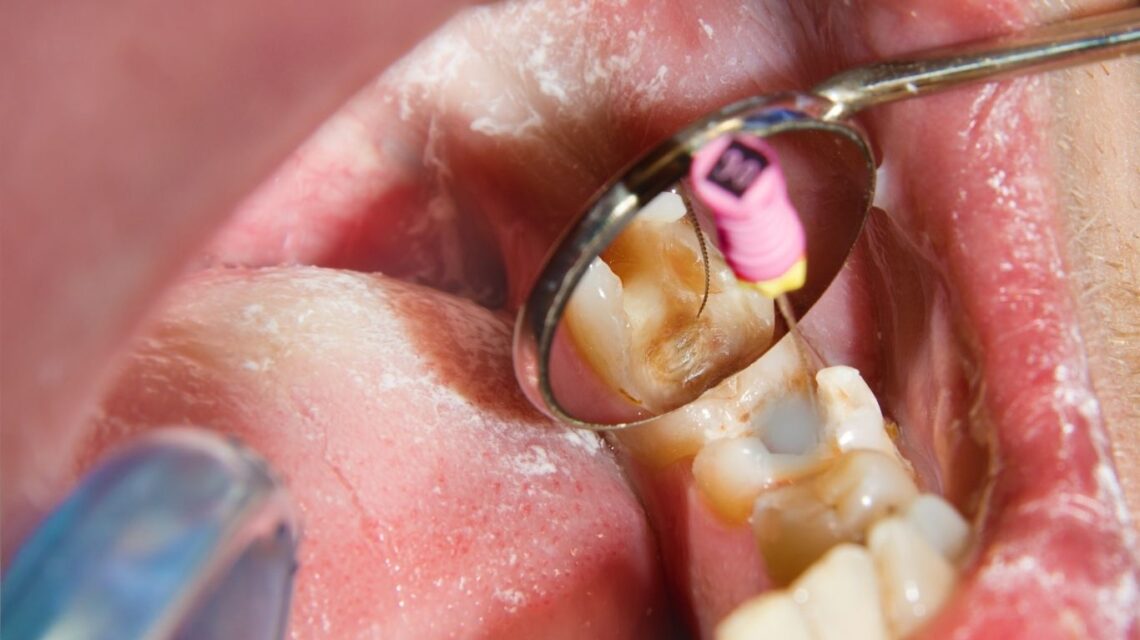If you’ve been told you might need a root canal or tooth extraction, you’re not alone and the decision can feel overwhelming. Both options aim to treat a damaged or infected tooth, but they’re quite different in how they work and what they mean for your long-term oral health.
This guide walks you through the key differences and helps you understand when a root canal might be the better option over an extraction.
What is a Root Canal?
A root canal is a treatment used to save a tooth when the inner part known as the pulp becomes inflamed or infected. This can happen due to deep decay, a crack, or trauma.
During the procedure:
- The infected pulp is carefully removed.
- The inside of the tooth is cleaned and sealed.
- A filling or crown is usually placed on top to protect the tooth and restore its strength.
The aim is to keep your natural tooth in place, which helps you chew properly and prevents nearby teeth from shifting out of line.
What About Tooth Extraction?
Tooth extraction is when a tooth is removed entirely from its socket in the jaw. Dentists typically recommend this when:
- The tooth is too damaged or decayed to be saved.
- There’s a severe infection that has spread beyond the tooth.
- The tooth is impacted or causing crowding.
- Gum disease has weakened the surrounding bone and tissue.
Once a tooth is removed, you may need to consider options to replace it like a bridge, implant or denture to avoid long-term issues with bite and jaw alignment.
When Is a Root Canal the Better Option?
In many cases, keeping your natural tooth is the best outcome. A root canal may be the preferred choice if:
- The tooth can still be saved even if the pulp is infected.
- You want to avoid gaps in your smile or the need for replacement options.
- You’d like to maintain natural chewing and speaking function.
- You’re hoping to avoid jawbone shrinkage that can happen after extractions.
- You’re looking for a long-term solution without additional procedures.
While the upfront cost of a root canal can be higher than extraction, it often avoids the need for future treatments to replace the missing tooth which may be more costly down the track.
When Might Extraction Be the Right Choice?
Sometimes, removing the tooth is the safer or more practical option. Your dentist may recommend an extraction if:
- The tooth is badly broken down and can’t be restored.
- There’s a large infection that hasn’t responded to antibiotics or has affected the surrounding bone.
- Cost or health concerns make extraction the simpler option for you.
- Your treatment plan includes braces or other orthodontic work that requires making room in your mouth.
Your dentist will always talk through the pros and cons so you feel confident in your next steps.
Root Canal vs. Extraction: Key Differences
| Aspect | Root Canal | Extraction |
| Purpose | Aims to save and restore the natural tooth | Removes the damaged or severely infected tooth |
| Procedure | Involves removing the infected pulp, cleaning the area, and sealing the tooth | The entire tooth is removed from its socket in the jaw |
| Recovery Time | Generally a quick recovery with minor discomfort lasting a few days | Healing may take up to a week, with some post-operative soreness |
| Cost | Higher upfront cost, but can help avoid further treatment down the track | Lower initial cost, though additional expenses may arise if replacement is needed |
| Functionality | Keeps natural chewing and biting function intact | May require a dental implant, bridge, or denture to restore full function |
| Aesthetics | Preserves your natural smile | A replacement tooth may be needed for visual and functional restoration |
What About Recovery?
After a root canal, most people experience mild soreness for a day or two, but it’s generally manageable and you can return to normal activities quickly.
After a tooth extraction, healing may take a bit longer. You’ll need to follow some aftercare instructions to prevent complications and support the healing process especially in the first few days.
Is It Better to Extract a Tooth if It’s Not Visible When I Smile?
Even if a tooth isn’t visible, it plays a role in chewing and maintaining the structure of your jaw and surrounding teeth. Preserving the tooth with a root canal can prevent potential complications associated with tooth loss.
Will Removing a Tooth Affect the Alignment of My Other Teeth?
Yes, extracting a tooth without replacement can lead to neighboring teeth shifting into the empty space, potentially causing bite issues and misalignment. This underscores the importance of considering tooth replacement options post-extraction.
Still Not Sure Which Option is Right for You?
The best way to decide is to chat with a dentist. They’ll assess your tooth, take any necessary X-rays, and explain the most suitable treatment for your situation without any pressure.
At the end of the day, the goal is the same: to protect your oral health and help you feel comfortable and confident with your smile.
Need advice about a toothache or infection?
Book a visit with CentrePoint Dental local dentist in Tamworth today to discuss your options whether it’s a root canal, extraction, or simply a second opinion. You’re never expected to figure it out on your own — we’re here to help.


